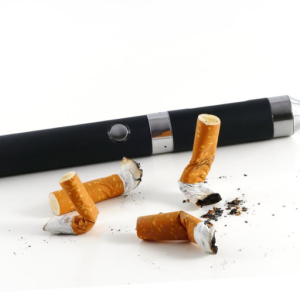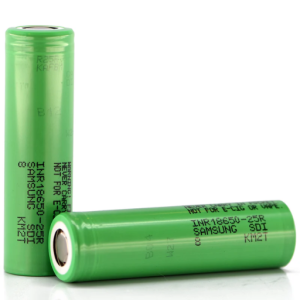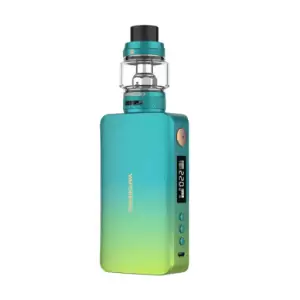Introduction: The Rise of Disposable Vapes in a Global Context
In recent years, the world has witnessed a significant shift in the smoking landscape, with disposable vapes emerging as a pivotal player. This surge in popularity is not just a trend but a reflection of the changing perceptions towards smoking and the quest for alternatives. Disposable vapes, known for their convenience and ease of use, have quickly become a go-to choice for many, sparking a global debate on their implications.
The allure of disposable vapes lies in their straightforward design and operation. Pre-filled with e-liquid and equipped with a pre-charged battery, they offer a hassle-free vaping experience, devoid of the complexities associated with traditional vaping devices. Yet, this convenience comes under the microscope as health professionals and regulatory bodies raise concerns over potential health risks and the adequacy of regulatory frameworks.
The debate surrounding disposable vapes encompasses a broad spectrum of issues, from health implications to environmental concerns, and the legalities governing their sale and use. Countries around the globe grapple with these challenges in diverse ways, leading to a patchwork of regulations that reflect varying degrees of acceptance and restriction. This global dialogue underscores a critical question: To vape or not to vape?
As we delve into the world of disposable vape, it’s essential to navigate the layers of enthusiasm and skepticism that surround them. By examining their rise, understanding their composition, and considering the regulatory landscape, we can begin to unravel the complexities of this global phenomenon. The journey through the realm of disposable vapes is not just about unraveling the nuances of a device but about understanding the broader implications for public health, society, and the future of smoking cessation.

The Anatomy of Disposable Vapes: Understanding What You’re Inhaling
Delving into the world of disposable vapes, it’s crucial to comprehend the components that make up these popular devices. A disposable vape is ingeniously designed to offer a straightforward, user-friendly experience, but what exactly are users inhaling with each puff? This exploration not only demystifies the physical makeup of these devices but also sheds light on the composition of the e-liquid that defines the vaping experience.
At its core, a disposable vape consists of a battery, an atomizer, and a reservoir filled with e-liquid. The battery powers the device, activating the atomizer, which heats the e-liquid to produce vapor. Unlike traditional vaping devices, disposable vape are designed for single use, with no option to recharge the battery or refill the e-liquid.
The e-liquid in disposable vape typically contains a mix of nicotine, propylene glycol (PG), vegetable glycerin (VG), and flavorings. Nicotine provides the addictive component smokers crave, while PG and VG serve as the base of the e-liquid, affecting the vapor’s thickness and smoothness. Flavorings are added to enhance the user experience, offering a myriad of taste options ranging from classic tobacco to exotic fruits and desserts.
Dr. Helen Thompson, a leading toxicologist specializing in respiratory health, emphasizes the importance of understanding these components. “While disposable vapes offer a less harmful alternative to traditional cigarettes, users should be aware of what they’re inhaling. The presence of nicotine means addiction is still a risk, and the long-term effects of inhaling flavorings and other chemicals in the vapor are not fully understood.”
This breakdown not only informs potential users about what goes into their lungs but also highlights the need for ongoing research into the effects of disposable vape components on health. As the market for disposable vapes continues to expand, understanding their anatomy becomes pivotal for users making informed choices about their vaping habits.
The Pros of Disposable Vapes: Convenience and Smoking Cessation
The ascent of disposable vape within the vaping community and beyond is largely attributable to two key advantages: their unparalleled convenience and their role in aiding smoking cessation. These facets have made disposable vapes a favored choice among a broad spectrum of users, from long-term smokers looking for a healthier alternative to newcomers intrigued by the simplicity and ease of use.
Convenience is perhaps the most lauded benefit of disposable vapes. These devices eliminate the intricacies associated with traditional vaping setups, such as the need for coil replacement, e-liquid refilling, and battery charging. Ready to use straight out of the box, disposable vapes provide a hassle-free vaping experience, ideal for individuals who are either not technically inclined or simply prefer a more straightforward approach. This plug-and-play model ensures that vaping can be enjoyed anytime, anywhere, without the need for preparation or maintenance.
Beyond the convenience factor, disposable vapes have emerged as a potent tool in the battle against smoking. Many smokers have turned to vaping as a means to quit smoking, with disposable vapes serving as a critical stepping stone in this transition. The ability to choose from various nicotine strengths allows individuals to gradually reduce their nicotine intake, potentially easing the process of quitting nicotine altogether.
Supporting this notion, numerous testimonials and studies highlight the effectiveness of vaping as a less harmful alternative to smoking. Dr. Samuel Choi, a researcher in addiction and tobacco harm reduction, underscores the potential benefits: “Evidence suggests that smokers who switch to vaping experience significant health improvements, including better lung function and reduced exposure to carcinogens. Disposable vapes, with their ease of use, can play a crucial role in this transition.”
The dual benefits of convenience and smoking cessation underscore the appeal of disposable vapes. They not only cater to the lifestyle needs of modern consumers but also align with public health goals of reducing the burden of smoking-related diseases. As the dialogue around vaping continues to evolve, the positive aspects of disposable vape remain central to discussions about their place in society.
The Cons of Disposable Vapes: Health Risks and Environmental Concerns
While disposable vapes offer notable benefits, including convenience and aiding in smoking cessation, they are not without their drawbacks. Two significant concerns stand out: the health risks associated with their use and the environmental impact stemming from their disposable nature. These issues paint a more complex picture of disposable vape usage, highlighting the need for careful consideration by users and policymakers alike.
Health Risks: Despite being marketed as a safer alternative to traditional cigarettes, disposable vapes still pose health risks, primarily due to the presence of nicotine and other chemicals in the vapor. Nicotine is a highly addictive substance, and its use can lead to dependence, while also potentially impacting heart health and blood pressure. Moreover, the long-term effects of inhaling propylene glycol (PG), vegetable glycerin (VG), and flavorings remain a topic of ongoing research. Concerns have been raised about the potential for these substances to cause respiratory issues and other health problems over time.
Dr. Emily Larson, a public health expert, emphasizes the need for caution: “While the transition from smoking to vaping can reduce exposure to many harmful toxins, users of disposable vapes should not overlook the potential health risks. The debate over the safety of inhaling vaporized chemicals is far from settled, and more research is needed to fully understand the implications.”
Environmental Impact: The environmental dimension of disposable vapes is equally troubling. The single-use nature of these devices contributes to electronic waste, a growing concern in terms of pollution and resource depletion. Each disposed vape adds to the mounting pile of electronic waste, much of which is not biodegradable and presents challenges in terms of recycling and disposal. This aspect raises questions about the sustainability of disposable vapes, urging consumers and manufacturers to consider the ecological footprint of these convenient devices.
Environmental advocate Sarah Nguyen highlights the issue: “The convenience of disposable vapes comes at a significant environmental cost. As the popularity of these devices grows, so does the urgency to address their disposal and the broader implications for our planet.”
In summary, the cons of disposable vapes—health risks and environmental concerns—demand attention and action. Users must weigh the benefits against these drawbacks, while manufacturers and regulators should work towards safer, more sustainable vaping solutions. Addressing these challenges is crucial for ensuring that the rise of disposable vapes does not come at an undue cost to public health and the environment.
Global Regulations on Disposable Vapes: A Comparative Analysis
Navigating the complex landscape of global regulations impacting disposable vapes reveals a patchwork of policies that vary significantly from one country to another. These regulations reflect diverse governmental stances on vaping, influenced by health concerns, industry lobbying, and cultural attitudes toward smoking and nicotine use. This section provides a comparative analysis of these regulatory frameworks, highlighting the differing approaches to disposable vapes across key regions: North America, Europe, Asia, and Oceania.
North America: In the United States, the Food and Drug Administration (FDA) regulates disposable vapes under the umbrella of tobacco products. Recent years have seen a tightening of regulations, including restrictions on flavored disposable vapes to curb youth vaping. In contrast, Canada’s approach balances regulation with harm reduction, allowing the sale of disposable vapes while implementing measures to prevent youth access and use.
Europe: The European Union’s Tobacco Products Directive (TPD) provides a regulatory framework for disposable vapes, setting standards for safety, quality, and packaging. The TPD restricts e-liquid volumes and nicotine strengths, while individual member states have the autonomy to impose further restrictions, leading to a varied regulatory environment across Europe.
Asia: The regulatory environment in Asia showcases extremes, with some countries embracing strict prohibition and others adopting more lenient policies. For instance, countries like Singapore and Thailand enforce outright bans on the sale and use of disposable vapes, citing public health concerns. Meanwhile, Japan allows the use of disposable vapes but regulates them strictly, particularly focusing on nicotine-containing products.
Oceania: Australia’s stance on disposable vapes is unique, requiring a prescription for nicotine vaping products as part of a strategy to prevent youth uptake while supporting smoking cessation efforts. New Zealand, on the other hand, has adopted a more permissive approach, recognizing the role of disposable vapes in harm reduction and smoking cessation.
This comparative analysis underscores the global divergence in regulatory approaches to disposable vapes. Such disparities not only affect the availability and usage of these products but also pose challenges for international travelers who vape. Regulatory bodies continue to grapple with finding the right balance between minimizing potential health risks associated with vaping and recognizing its role in harm reduction.
Experts like Dr. Laura Benson, a public health policy advisor, emphasize the need for ongoing research and international collaboration. “As evidence on the health impacts of disposable vapes evolves, so too should our regulatory frameworks. International cooperation is essential to ensure that policies effectively protect public health while supporting those looking to quit smoking.”
The landscape of global regulations on disposable vapes is ever-changing, influenced by new research findings, public health campaigns, and shifting societal norms. As countries continue to refine their policies, the debate over the best regulatory approach to vaping and disposable vapes remains a key issue in public health discourse.
Navigating the Legal Landscape: Tips for Vapers Traveling Abroad
For vapers, especially those who favor disposable vapes, navigating the legal landscape while traveling abroad can be a challenge. With regulations around vaping varying significantly across the globe, it’s essential to be well-informed to avoid any legal pitfalls. This section offers practical advice for vapers on respecting international laws and customs regarding disposable vapes, ensuring a smooth and law-abiding travel experience.
Research Before You Travel: Prior to embarking on your journey, invest time in researching the vaping regulations of your destination country. This includes understanding whether disposable vapes are legal, if there are any restrictions on nicotine strength or flavors, and the laws surrounding vaping in public spaces.
Packing and Transport: When packing disposable vapes for your trip, it’s important to follow airline regulations. Most airlines allow e-cigarettes to be carried in carry-on luggage but prohibit them in checked luggage due to battery safety concerns. Always check the airline’s policy in advance to ensure compliance.
Customs Regulations: Be aware of the customs regulations regarding disposable vapes in the country you are visiting. Some countries have limits on the number of vaping devices or the amount of e-liquid you can bring in, while others may require you to declare these items upon entry.
Local Laws and Etiquette: Even in countries where vaping is legal, there may be restrictions on where you can use your disposable vape. Familiarize yourself with local laws regarding vaping in public spaces, as well as any societal norms or etiquette around vaping to avoid offending locals or breaking the law.
Be Prepared for Restrictions: In countries with strict vaping regulations, consider alternatives to disposable vapes that comply with local laws. This might include nicotine replacement therapies or other cessation aids if your primary goal is to manage nicotine cravings while traveling.
Stay Informed About Changes: Vaping regulations can change rapidly, so it’s crucial to stay informed about any updates or amendments to laws in your destination country. Checking reliable sources or contacting local vaping communities online can provide up-to-date information and advice.
Dr. Emily Rodriguez, a travel health expert, emphasizes the importance of preparation: “Understanding and respecting the vaping regulations of your destination is not only about legal compliance but also about cultural sensitivity. By being well-prepared, vapers can enjoy their travels without inadvertently breaking the law or disrespecting local customs.”
By following these tips, vapers can navigate the international legal landscape more confidently, ensuring that their use of disposable vapes while traveling aligns with local regulations and cultural norms. Preparation and respect for the laws of the land are key to a hassle-free travel experience for vapers exploring the world.
The Future of Vaping: Trends and Predictions in Global Regulations
As the vaping industry continues to evolve, so too do the global regulations that govern the use and sale of disposable vapes. With public health concerns, technological advancements, and changing societal attitudes driving regulatory changes, the future landscape of vaping laws appears poised for significant shifts. This section explores expert predictions on the direction of future regulations affecting disposable vapes and the potential innovations that could shape the vaping industry.
Stricter Age Verification and Marketing Restrictions: In response to rising concerns about youth vaping, experts predict a global trend towards stricter enforcement of age verification measures and tighter controls on the marketing of disposable vapes. These measures aim to protect young people from initiating vaping while still allowing adult smokers access to these products as a harm reduction tool.
Enhanced Product Safety Standards: Technological advancements are expected to lead to enhanced safety features in disposable vapes, including more reliable battery technology and safer e-liquid formulations. Regulations may evolve to set higher standards for product safety, requiring manufacturers to implement these advancements to protect consumers.
Sustainability and Environmental Regulations: With environmental concerns coming to the forefront, the vaping industry may see increased pressure to address the sustainability of disposable vapes. Future regulations could mandate recyclable materials, biodegradable components, or refillable options to minimize the environmental impact of vaping products.
Harmonization of Global Regulations: As the vaping market continues to globalize, there may be efforts towards the harmonization of regulations across borders. This would facilitate international trade and ensure consistent safety and quality standards for disposable vapes worldwide. However, achieving global consensus on vaping regulations will require significant diplomatic effort and collaboration among nations.
Adaptation to Public Health Research: As research into the long-term health effects of vaping continues to develop, regulations will likely adapt to reflect new findings. This could include adjustments to permissible nicotine levels, restrictions on certain ingredients, or new guidelines for the use of disposable vapes in smoking cessation.
Dr. Marco Valenti, a specialist in public health policy and tobacco control, emphasizes the dynamic nature of vaping regulations: “The future of vaping regulations will be shaped by our growing understanding of the risks and benefits associated with disposable vapes. Policymakers must remain flexible, basing regulations on the latest scientific evidence to effectively balance public health goals with individual freedoms.”
In conclusion, the future of vaping and the regulations governing disposable vapes are likely to be characterized by a focus on safety, youth protection, environmental sustainability, and evidence-based policy-making. As the industry and regulatory landscape evolve, stakeholders must stay informed and engaged to navigate the changes ahead.

Conclusion: Making an Informed Decision on Disposable Vapes
As we’ve navigated through the complexities of disposable vapes, from their anatomy and benefits to the global regulatory environment and future predictions, it’s clear that these devices play a significant role in the current landscape of nicotine consumption. The journey through the pros and cons, as well as the legal tapestry surrounding disposable vapes, highlights the need for consumers to make informed decisions based on a comprehensive understanding of both the potential benefits and risks.
The convenience and smoking cessation potential of disposable vapes offer compelling reasons for their use, especially for those seeking to quit smoking traditional cigarettes. However, concerns regarding health risks, environmental impact, and the regulatory challenges across different jurisdictions underscore the importance of approaching vaping with caution and awareness.
As regulations continue to evolve in response to emerging research and societal shifts, the future of disposable vapes will likely see innovations aimed at enhancing safety, reducing environmental harm, and further supporting smoking cessation efforts. Consumers, manufacturers, and policymakers alike must remain adaptable, informed, and engaged with the latest developments in the vaping industry and public health research.
In making a decision on whether to vape or not to vape, individuals should weigh the pros and cons, considering health implications, environmental considerations, and legal constraints. Seeking information from credible sources, consulting healthcare professionals, and staying updated on regulatory changes are all prudent steps in navigating the world of disposable vapes.
Ultimately, the choice to use disposable vapes is a personal one, influenced by individual circumstances, goals, and values. By taking a balanced and informed approach, individuals can make decisions that best align with their health and well-being, while respecting the laws and norms of their community and the broader global context.
FAQs: Common Questions About Disposable Vapes
As the conversation around disposable vapes evolves, it’s natural for users and the curious to have questions about these devices. This section aims to address some of the most frequently asked questions, providing clear and concise answers to help demystify disposable vapes and their use.
What Exactly Are Disposable Vapes?
Disposable vapes are single-use vaping devices pre-filled with e-liquid and equipped with a battery. Designed for convenience, they are used until the e-liquid runs out or the battery dies, at which point the entire device is disposed of.
How Do Disposable Vapes Compare to Regular Cigarettes?
Disposable vapes offer a smoke-free alternative to traditional cigarettes by delivering nicotine in vapor form without the tar, carbon monoxide, and other harmful chemicals found in cigarette smoke. They are considered by many as a less harmful option for nicotine intake.
Can Disposable Vapes Help Me Quit Smoking?
Many users find disposable vapes useful in quitting smoking, as they mimic the act of smoking but with reduced harm. However, success varies from person to person, and additional support may be beneficial for those looking to quit nicotine entirely.
Are There Health Risks Associated With Disposable Vapes?
While disposable vapes are generally seen as less harmful than smoking cigarettes, they are not risk-free. Nicotine addiction is a concern, and the long-term health effects of vaping are still being studied. Users should be aware of the potential risks associated with inhaling vaporized e-liquids.
Is Vaping More Environmentally Friendly Than Smoking?
Disposable vapes reduce some of the environmental impacts associated with cigarette butts, which are a major source of litter. However, the disposable nature of these devices raises concerns about electronic waste. Users are encouraged to dispose of them responsibly.
How Are Disposable Vapes Regulated?
The regulation of disposable vapes varies by country and region, with some places imposing strict rules on their sale, distribution, and use. It’s important for users to familiarize themselves with the local regulations to ensure compliance.
Where Can I Safely Dispose of a Disposable Vape?
Given their electronic components, disposable vapes should be disposed of as electronic waste. Many communities offer e-waste recycling programs, and users are urged to utilize these services to minimize environmental impact.






